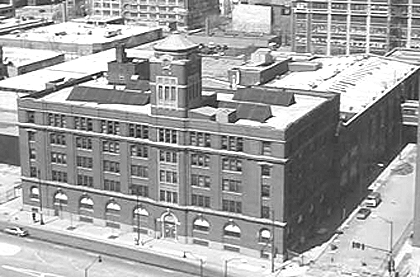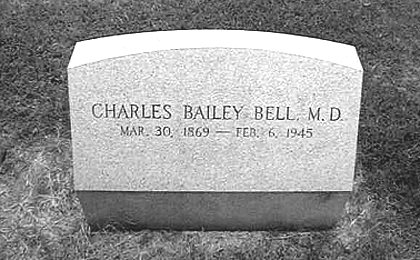The Bell Witch: The Full Account (24 page)

177
time it was the sound of beautiful music, and not the
melancholy voice blowing through the trees.
Beautiful Music at the Enchanted Spring
One day in the spring of 1866, John Gunn and
A.L. Bartlett crossed the Red River near the
Enchanted Spring on their way home to Adams
Station after having spent the day with their lady
friends in nearby Guthrie, Kentucky. Hot and
exhausted from the trip, they partook of the
Enchanted Spring’s cool and flowing water once they
crossed the river.
As they finished guzzling the refreshing water, they
began climbing the long and gradual slope next to
the spring where they would soon reach Johnston
Springs Road.
Having gotten no more than a few
yards, they began hearing loud, ear-piercing tones
that evolved into a musical score they later described
as being the sweetest music they had ever heard.
The music filled the entire forest with a loud and
sweet melody like none ever heard before. Neither of
the men could move while they listened to the music;
the loud tones and sweet melody had a paralyzing
effect on them. They listened to this beautiful music
until it stopped some thirty minutes later. The men
tried desperately to find the source of the music but
found nothing. Neither man crossed the Red River in
this area again, nor married on the north side of the
river. r
One of the more frequent happenings in the
Nineteenth Century was the machinery’s
mysteriously running at Clark’s Mill, just down the
Red River from the Bell farm. Many times, someone
could go by there at night and either see mysterious
lights glowing or hear the sound of the machinery
grinding.
178 P A T
F I T Z H U G H
CHAPTER TWENTY
Early Published Accounts
T HE THREE NINETEENTH CENTURY
accounts published above are but a few of
many reported encounters with Kate after her
supposed departure. Such accounts were even taken
under oath on some occasions. The following are
among the earliest published accounts of the “Bell
Witch.”
The Goodpasture Account
One of the earliest published accounts of Kate was
a paragraph written in a history book by Tennessee
Historian Albert Virgil Goodpasture, in 1886:
“A remarkable occurrence, which attracted wide-
spread interest, was connected with the family of
John Bell, who settled near what is now Adams
Station about 1804. So great was the excitement
that people came from hundreds of miles around
THE BELL WITCH: THE FULL ACCOUNT
179
to witness the manifestations of what was
popularly known as the ‘Bell Witch.’
This witch was supposed to be some Spiritual
being having the voice and attributes of a woman.
It was invisible to the eye, yet it would hold
conversation and even shake hands with certain
individuals. The freaks it performed were
wonderful, and seemingly designed to annoy the
family. It would take the sugar from the bowls,
spill the milk, take the quilts from the beds, slap
and pinch the children, and then laugh at the
discomfiture of its victims.
At first it was supposed to be a good Spirit, but its
subsequent acts, together with the curses with
which it supplemented its remarks, proved the
contrary. A volume might be written concerning
the performances of this wonderful being, as they
are now described by contemporaries and their
descendants.
That all this actually occurred will not be
disputed, nor will a rational explanation be
attempted. It is merely introduced as an example
of superstition, strong in the minds of all but a
few in those times, and not yet wholly extinct.” 44
The Ingram Account
Few encounters with Kate were reported in the late
1880s and early 1890s, partially because of the long-
awaited publication, “Authenticated History of the
Bell Witch,” by Martin V. Ingram of Clarksville,
Tennessee. Ingram’s efforts in researching the
legend over a period of many years and publishing a
comprehensive account of it were well-known, and
many people kept silent about any encounters they
44 Albert Virgil Goodpasture,
Goodspeed History of Tennessee – Robertson County
, 1886, p. 833.
180 P A T
F I T Z H U G H
experienced which might have been the work of Kate
so as to avoid being labeled as “fools” by those who
would read Ingram’s book. They expected Ingram to
solve the mystery of the “Bell Witch” using conclusive
evidence.
Published in 1894, Ingram’s work was the first
book written exclusively about Kate and was the
culmination of his efforts over several years to obtain
eyewitness interviews and testimonial letters, collect
stories passed down from eyewitnesses to their
descendants, and to publish Richard Williams Bell’s
manuscript,
Our Family Trouble.
One of Ingram’s closest friends was Joel Egbert
Bell. Although very young at the time of Kate’s
apparitions and demonstrations, he remembered a
great deal and shared lots of this information with
Ingram. Ingram had discussed the idea of a book
with both Joel Bell and Allen Bell, who discussed the
matter with their relatives and decided it best for
Ingram not to publish his book until all of John
Bell’s immediate family had died. Joel Egbert Bell,
who was the last surviving child of John Bell, died in
1890.
At that time, Ingram obtained Richard Williams
Bell’s manuscript from Allen Bell and resumed his
work, finishing it in late 1893 and publishing in
1894. Originally published with a white cover and
gold lettering, the book was printed by Donnelly
Printing in Chicago, and Sanders Engraving
Company in St. Louis the picture plates. A small
number of copies were printed, and most were sold
by mail order.

THE BELL WITCH: THE FULL ACCOUNT
181
This abandoned building near McCormick Place
in Chicago, Illinois was the site of Donnelly’s
printing operations during the 1890’s when
Ingram’s book was printed. It was replaced by
a parking lot shortly after this picture was
taken.
The “Red Book”
Charles Elder of Nashville first reprinted Ingram’s
book in 1961; and then later, in 1971, a company in
east Tennessee also made reprints. The first few
reprints featured a white cover and gold lettering just
as the original copies did, but were later replaced by
a red cover and black lettering — thereby earning the
book its popular name, “The Red Book.”
Because Ingram’s book was written a relatively
short time after Kate’s disturbances, and contains
Richard Williams Bell’s 1846 manuscript and other
eyewitness accounts, it serves as the basis of most
later publications that pertain to the “Bell Witch.”
Despite the small number of copies printed, 2,000
or so, Ingram’s book did a lot to increase public
182 P A T
F I T Z H U G H
interest in the legend of the “Bell Witch.” By 1909,
postcards were printed showing the cave and other
parts of the old Bell farm.
The FGWPA Account
Several years later, in 1933, the Federal
Government’s Works Project Administration
published the following paragraph:
“Sure enough, tradition says, the Bells were
tormented for years by the malicious Spirit of Old
Kate Batts. John Bell and his favorite daughter
Betsy were the principal targets. Toward
the
other members of the family the witch was either
indifferent or, as in the case of Mrs. Bell, friendly.
No one ever saw her, but every visitor to the Bell
home heard her all too well. Her voice, according
to one person who heard it, ‘spoke at a nerve-
racking pitch when displeased, while at other
times it sang and spoke in low musical tones.’
The Spirit of Old Kate led John and Betsy Bell a
merry chase. She threw furniture and dishes at
them. She pulled their noses, yanked their hair,
and poked needles into them. She yelled all night
to keep them from sleeping, and snatched food
from their mouths at mealtime.” 45
Encounters with Kate have been reported in the
Twentieth Century just as they were in the
Nineteenth Century. Most Twentieth Century
encounters with Kate were reported after 1935, the
year in which she promised John Bell, Jr. and Frank
Miles that she would return to visit John Bell’s
closest direct descendant.
45 Federal Government Works Project Administration,
Guidebook for Tennessee
, 1933.
THE BELL WITCH: THE FULL ACCOUNT
183
The Charles Bailey Bell Account
John Bell’s most direct descendant in 1935 was
Dr. Charles Bailey Bell, a neurologist in Nashville,
Tennessee. He was the son of Dr. Joel Thomas Bell,
son of John Bell, Jr. and grandson of John Bell. Dr.
Bell wrote his own book about Kate, “The Bell Witch
– A Mysterious Spirit,” in 1934 — one year before
Kate’s promised return.
In addition to many of the same stories published
in Martin Ingram’s earlier book, Bell’s book presents
a comprehensive account of several private
conversations that allegedly took place between John
Bell, Jr. and Kate during her 1828 visit. It is said
that many members of the Bell family were outraged
when Dr. Bell’s book was published.
Even to this day, some people believe that Dr. Bell
or his father fabricated the story of conversations
between John Jr. and Kate as a means of expressing
their own religious and philosophical views —
essentially, using Kate as their mouthpiece. Whether
the conversations between John Bell, Jr. and Kate
really took place, nobody knows. The notes allegedly
taken by Dr. Bell’s father, Dr. Joel Thomas Bell,
under the direction of his father, John Bell, Jr., have
never been found. Even if such notes were found
and proved to be the handwriting of Dr. Joel Thomas
Bell, there remains no way to prove that he penned
them under the direction of his father, John Bell, Jr.
The “Black Book”
Originally red in color, Dr. Charles Bailey Bell’s
book was first reprinted by Charles Elder, Bookseller,
of Nashville in 1972 under the title, “The Bell Witch
184 P A T
F I T Z H U G H
of Tennessee.” 46 The reprints feature a black cover
with white lettering, which earned the book its
popular name, “The Black Book.” The “Black Book”
contains not only Dr. Charles Bailey Bell’s original
book, “The Bell Witch – A Mysterious Spirit,” but also
a book written by Harriet Parks Miller, a Montgomery
County school teacher, which is entitled, “The Bell
Witch of Middle Tennessee.” 47
Dr. Bell never published a follow-up to his 1934
book, and there are no documented reports of Kate’s
visiting any of John Bell’s direct descendants in 1935
as she had promised. However, if Kate did in fact
revisit any of John Bell’s descendants, the likelihood
of such a visit being made publicly known is slim to
none. Dr. Charles Bailey Bell died in 1945, and is
buried in Bellwood Cemetery on Highway 41 just east
of Adams, Tennessee.
46 Charles Bailey Bell, M.D., Harriet Parks Miller,
The Bell Witch of Tennessee
(n.p., 1930, 1934; facsimile reproduction by Charles Elder, Bookseller: Nashville, 1972).
47 Harriet Parks Miller,
The Bell Witch of Middle Tennessee
, Leaf-Chronicle Publishing Co., Clarksville, 1930.

